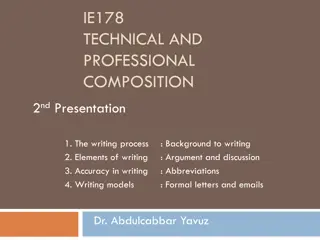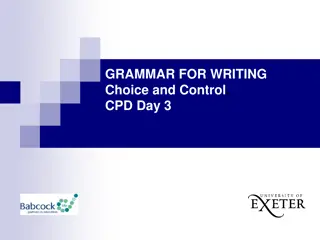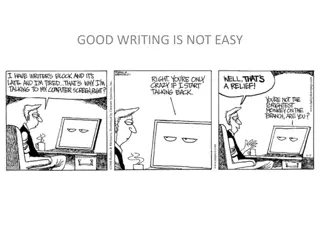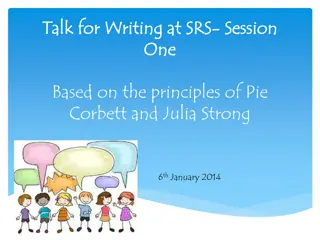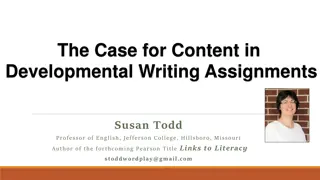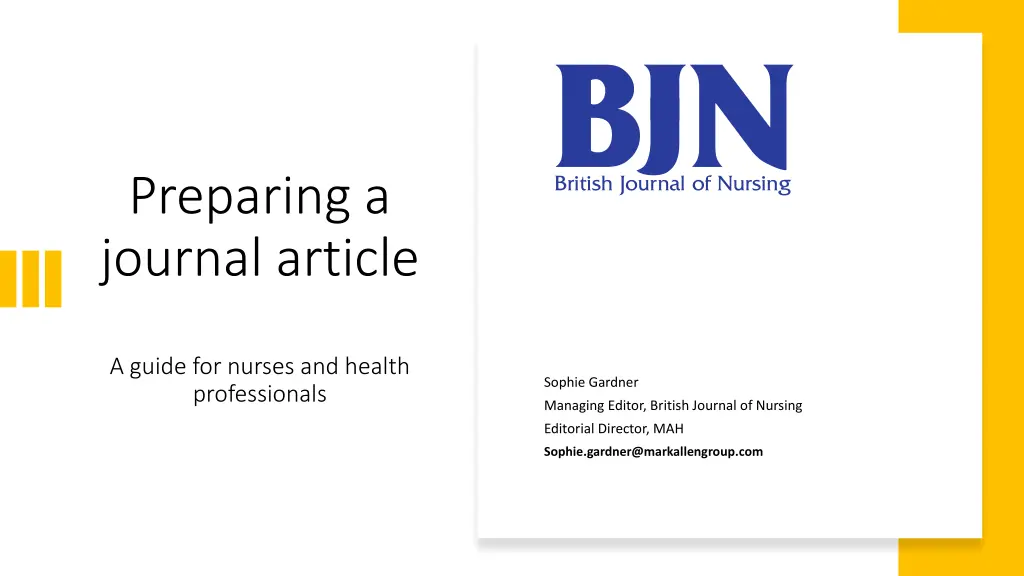
Guide for Nurses: Writing Journal Articles for Career Growth
Explore the comprehensive guide on writing journal articles for nurses and health professionals, covering reasons to write, personal and patient benefits, where to begin, types of articles, research article structures, submission guidelines, and writing style tips.
Download Presentation

Please find below an Image/Link to download the presentation.
The content on the website is provided AS IS for your information and personal use only. It may not be sold, licensed, or shared on other websites without obtaining consent from the author. If you encounter any issues during the download, it is possible that the publisher has removed the file from their server.
You are allowed to download the files provided on this website for personal or commercial use, subject to the condition that they are used lawfully. All files are the property of their respective owners.
The content on the website is provided AS IS for your information and personal use only. It may not be sold, licensed, or shared on other websites without obtaining consent from the author.
E N D
Presentation Transcript
Preparing a journal article A guide for nurses and health professionals Sophie Gardner Managing Editor, British Journal of Nursing Editorial Director, MAH Sophie.gardner@markallengroup.com
Why write? Reasons to write: It s a topic you feel strongly about You want to relate your experiences so that other nurses and patients can benefit You had an excellent mark for a paper and your supervisor said you should try to get it published You want to see your name in print It would look good on your CV Because the editor asked you to
Why write? Personal benefits: Improving your knowledge and critical thinking Evidencing your achievements Supporting your career development Patient benefits: Providing their perspectives Identifying problems Guiding improvements in care quality
Where to begin Choose something you understand and feel confident about Identify your reasons for writing Consider the take-home message for readers Identify your audience
What to write Types of articles: Editorials Service developments Case reports Clinical how to articles Research
Research articles Typical structure: Introduction Methods Results Discussion Conclusion
Research articles Depending on your research, it must be submitted to a trials registry before your study has started Randomised controlled trials must adhere to the CONSORT Statement http://www.consort-statement.org/ Observational studies (cohort, case-control, cross-sectional studies) should adhere to the STROBE statement: https://www.equator-network.org/reporting-guidelines/strobe/
Structure Introduction Methods Results Discussion Conclusion
Writing style Tips: Use straightforward language Avoid jargon Explain abbreviations and measurements Anticipate the reader s questions
Supporting literature Tips: Use primary rather than secondary sources as far as possible Ensure all information from sources other than the study itself is appropriately referenced Use up-to-date and authoritative sources. Do not use AI to write or format the article or references
Conflicts of interest Explanation: Any financial, commercial, legal, or professional relationship with other organizations, or with the people working with them, that could influence the work should be declared. When in doubt, just declare it.
Figures and tables Attract reader attention Help break the monotony of text Help keep the article concise Aid reader understanding Make sure all figures contain a descriptive caption Don t use fancy formatting on tables Tip: Any images of patients must be anonymized Sources of images Patient photographs Adobe Stock/Science Photo Library Make your own! we can get them redrawn
Title and abstract Abstract Advertises the article Should emphasise key findings Title Concise and catchy Use key words Should not be a complete sentence or make a claim Should ideally include the type of study (case report/review) Tip: The abstract should make sense on its own, without the text for context
Submitting your article Steps Check format required Separate title page Numbered pages? Key words, boxes Tables and figures References
Reviewers Reviewers are usually experts in the field or peers They help the journal decide on the merits of the article They provide suggestions for improvement Tip: After writing, assess your article against a reviewer s checklist (many available online)
What do the reviewers look for? References (up-to date and relevant) Does the article add something new to the body of knowledge? Is it relevant to the target audience Does the article have a sound theoretical, research, or philosophical base? Is the article well organised and logically developed? Are the interpretations and conclusions justified from the data presented? Does the author include further recommendations for practice? Plagiarism
Peer review process Often (but not always) double-blind Reviewers make recommendations to the editor on whether to accept or reject and reasons why May make suggestions for revisions British Journal of Nursing reviewer recommendations Accept (very rare to have unconditional acceptance) Accept subject to minor revisions Revise and resubmit for second review Reject Editor makes the decision based on recommendations
Revisions/amendments No one likes criticism but reviewers (and editors) usually have good reasons for suggesting changes consider carefully If there is a good reason why something should not be changed, talk to the editor Remember you have the right to withdraw your article and submit elsewhere if you really do not wish to change any of it Good practice to outline changes made (or not) in cover letter with resubmitted version
The subeditor Amends grammar and spelling and makes sure text conforms to house style Assesses whether meaning will be clearly understood by reader If not, will suggest changes to phrasing or query (and then suggest changes!) May pick up on minor issues missed by the reviewers
Final tips Plan your article Know your audience Read and follow the author guidelines Be concise and consistent Use tables and figures sparingly and to your advantage Avoid abbreviations Listen to the feedback from both peers and reviewers Do not plagiarise





